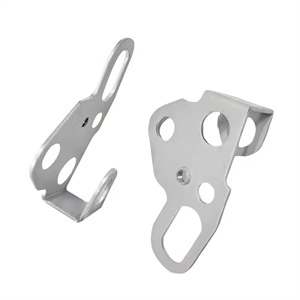Customized high-precision stamping components are components manufactured through high-precision stamping processes based on specific requirements and designs. It has the following significant characteristics:
Highly personalized: Designed and produced entirely according to the unique requirements of customers, able to meet various special shapes, sizes, and performance requirements. For example, a certain car manufacturer needs a special shape and specification of engine components, which can be achieved through customized high-precision stamping.
Accurate size control: The dimensional accuracy can reach a very high level, ensuring perfect fit between components and other components. In precision instrument manufacturing, customized high-precision stamped optical components can be accurately installed inside the instrument, achieving high-precision measurement and observation.
Excellent material performance: Suitable materials can be selected according to specific applications, and the performance of materials can be optimized through stamping processes. For example, in the aerospace field, high-strength and high-temperature resistant alloy materials are selected for customized stamping to meet the requirements of extreme environments.
Complex structure forming ability: able to manufacture components with complex internal structures and external shapes. For example, customized high-precision stamped shielding covers in certain electronic devices can provide good electromagnetic shielding effects and have unique external design.
As an advanced metal processing technology, high-precision stamping has a series of significant characteristics. The following is a detailed explanation of the characteristics of high-precision stamping:
High precision and high quality: The core of high-precision stamping lies in its ability to manufacture stamping parts with precise dimensions and complex shapes. Through precise mold design and advanced stamping technology, micrometer level machining accuracy can be achieved, ensuring that the shape, size, and surface quality of the product meet extremely high standards.
High efficiency and high production capacity: The stamping process itself has high efficiency, and high-precision stamping is even more so. Due to the one-time forming of materials in the mold during the stamping process, there is no need for additional cutting or polishing, which can greatly improve production efficiency. Meanwhile, automated and mechanized stamping equipment can achieve continuous operation, further improving production capacity.
High material utilization rate: High precision stamping can effectively utilize materials and reduce waste. Through reasonable mold design and precise stamping control, waste generation can be minimized to the greatest extent and the utilization rate of raw materials can be improved.
Good product consistency: Due to the use of standardized molds and process parameters in high-precision stamping, the produced stamping parts have excellent consistency. It can maintain high stability and repeatability in terms of shape, size, and performance.
Wide application range: High precision stamping is not only suitable for simple geometric shapes, but also capable of processing complex spatial curved parts. This makes it widely used in various fields such as automobiles, aerospace, electronics, and home appliances.
